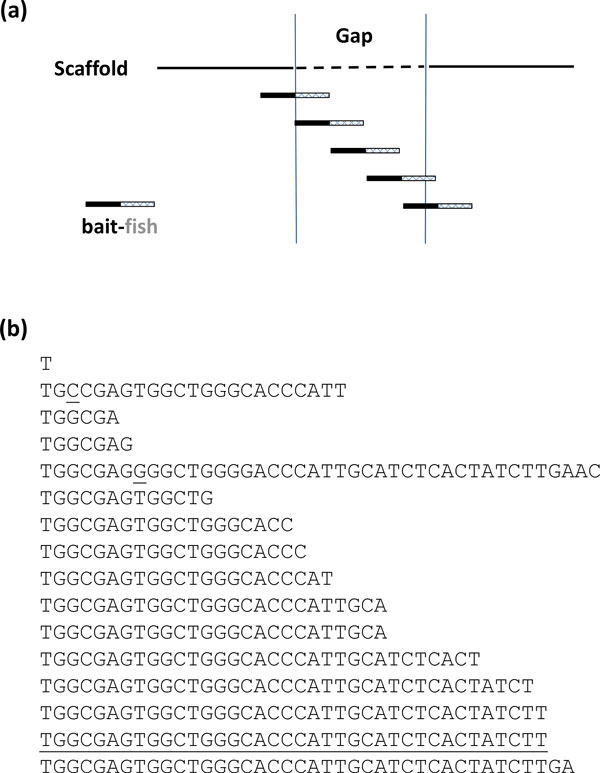Figure 2.

Schematic overview of the GapFish algorithm. (a) A segment upstream of a gap will be used as the "bait" to search against all Illumina reads that are 90 nt long. If the "bait" is found in a read, GapFish will excise the fragment adjacent to the "bait" at the 3' direction and return the result (the "fish") to the console. At the end of each search, all identified fragments will be sorted and save into a text file. (b) An example output of GapFish when searching with "bait" = 'GAGGCTCCTCAGGCGGTTGTGGAGGGCAATCCCAGAAACTCCG' (total 43 nt). Sequencing errors are apparent in the results, such as the 3rd position (G -> C) in the second line and the 8th position (T -> G) in the fifth line (both are underlined). This type of errors could have led to the collapse of the assembling effort of SOAPdenovo, leaving a gap behind. For solving this type of complications, GapFish-assisted human interventions have proven to be necessary. The sequence second to the last one (also underlined) will be used as the "bait" for the next round of search.
